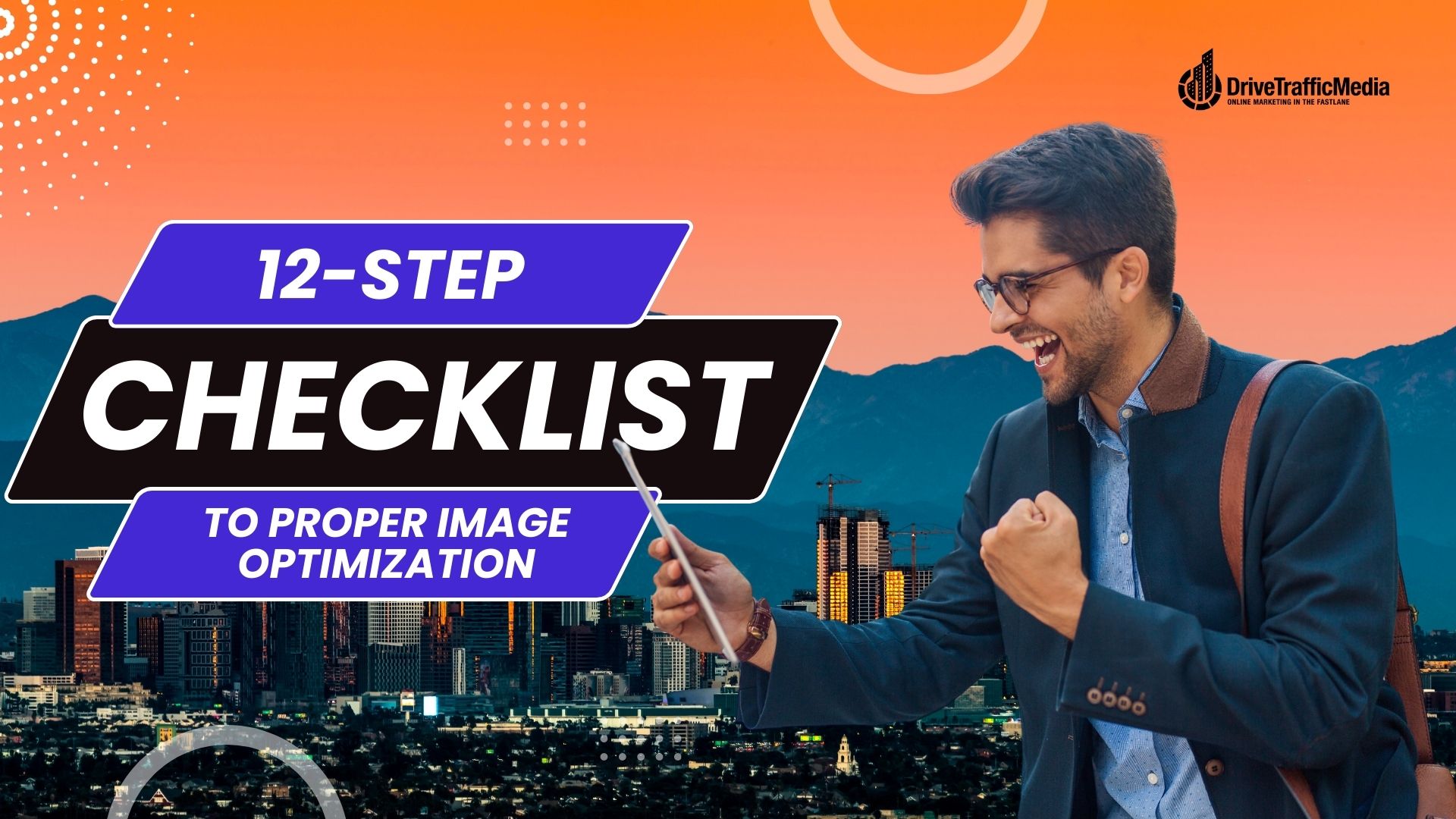Adding pictures to your site is like taking care of a dog—they’re fun and cute but involve a lot of responsibility. You need to make sure you’re cleaning up any messes and training them well so they don’t bother anybody.
This is where image optimization comes in. It ensures your images can be easily found on Google without hindering your site’s page loading speed and user experience. It helps generate new leads and keep customers loyal to your brand.

Here are our twelve tips to optimize your images.
1. Pick the Right Format
There are a couple of image formats available, but make sure you’re picking the right one. Each one has its pros and cons. For example, PNG produces high-quality images but has a larger image file size. JPEG, on the other hand, is the opposite—they are lower quality but also smaller. And of course, you can’t forget the classic GIF that nobody can agree on the pronunciation of.
What you use is your personal preference.
2. Compress Images
Bigger images lead to slower page speeds, so avoid them at all costs! Compress all your images before uploading them onto your site using tools like Adobe, TinyPNG, and ImageSmaller.
3. Have Unique Images
Los Angeles SEO experts insist that you need unique written content, but did you know they also highly recommend unique image content? Your website will just be another in a whole sea of websites if you use the same stock photos everybody else does.
4. Avoid Copyright Issues
You might have heard about the Digital Millennium Copyright Act (DMCA). It’s a law that protects original creators from copyright infringement. So, if your site uses an image without the owner’s express permission, then you could be forced to take it down or even get sued.
Avoid this issue by searching Google Images for pictures that are available for reuse, investing in stock photography websites and making sure to read their terms and conditions carefully, or looking through websites that offer free royalty-free images.
5. Specify Image File Names
When you upload an image onto your site, Google analyzes your image’s file name to figure out what it’s about. So, if your image is named something like “iowebdiowedl.png” or “IMG_72323.jpg”, it’s not going to help Google.
Use descriptive names with lots of keywords so Google can understand the image and your website more quickly.
6. Write Keyword-Optimized Alt Text
There are two benefits to optimizing alt text.
Firstly, it helps Google understand what the images are. The more descriptive your alt text, the likelier it will show up on Google Images. Google itself has commented on how helpful alt text can be for SEO.
Of course, alt text optimization is also subjected to the usual guidelines—keyword stuffing will never be good in any context.
Secondly, optimized alt text helps people with disabilities understand your images. You want to have good alt texts so everyone in your audience can enjoy your content.
7. Use Image Folders
A surprising image ranking factor Google uses is the image folder. That is, if your site’s got a lot of pictures just jammed into the same folder, it will rank significantly lower than a site that arranges its images into multiple, clearly-labeled folders. It’s like a breadcrumb trail, but for images!
8. Have Descriptive Titles and Descriptions
Besides alt texts, Google also uses elements of your page like meta descriptions and titles in its image search algorithms. Google does this because it wants to generate images that match a searcher’s query and lead them to sites they might enjoy.
For example, I plugged the term ‘bamboo spoons’ into the search engine. Aside from the usual sales websites, I also pulled up sites about ‘caring for bamboo spoons’ or ‘pros and cons of bamboo spoons’ that I might also be interested in.

9. Define Length and Width
If you’ve ever been online shopping, then you’ve probably seen those image-laden sites that are frustrating to deal with. Their ‘add-to-cart’ button keeps getting pushed further and further down because images load late and out of order.
So, avoid this from happening by inputting your image’s length and width. This lets browsers know how to size images before it loads and prevents the page from jumping around.
10. Optimize for Mobile
Over half of today’s organic searches are conducted through mobile devices, so optimizing your images for mobile use makes sense! When uploading images, make sure that it scales properly to fit both the desktop and mobile versions. Make sure it looks good too—small text can look good on desktop but minuscule on mobile.
11. Add Images to Your Sitemap
Think of a sitemap as like, well, a map. It tells you important landmarks (i.e., pages, files, and images) and how to get there. If you’ve got one of those fancy maps, you also get a short description of landmarks that tells you about its history and other interesting tidbits (i.e., alternate language versions, publication date, license, etc.).
Google uses sitemaps to navigate through your pages quickly and efficiently.
12. Structure with Schema
You can amplify your images by structuring them with schema. You can provide a better search experience for users if you add in a lot of rich data about your images.
For example, if your image is of a product you sell, you can utilize product schema to show prices, ratings, and stock information under your image.

Conclusion
As you can see, proper image optimization can take your website to the next level. It’s a relatively untouched area of SEO that can significantly up your user experience and site rankings. So, take advantage of this! After all, everybody loves picture books.
